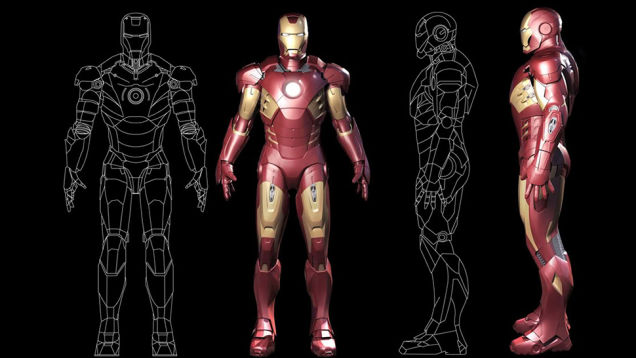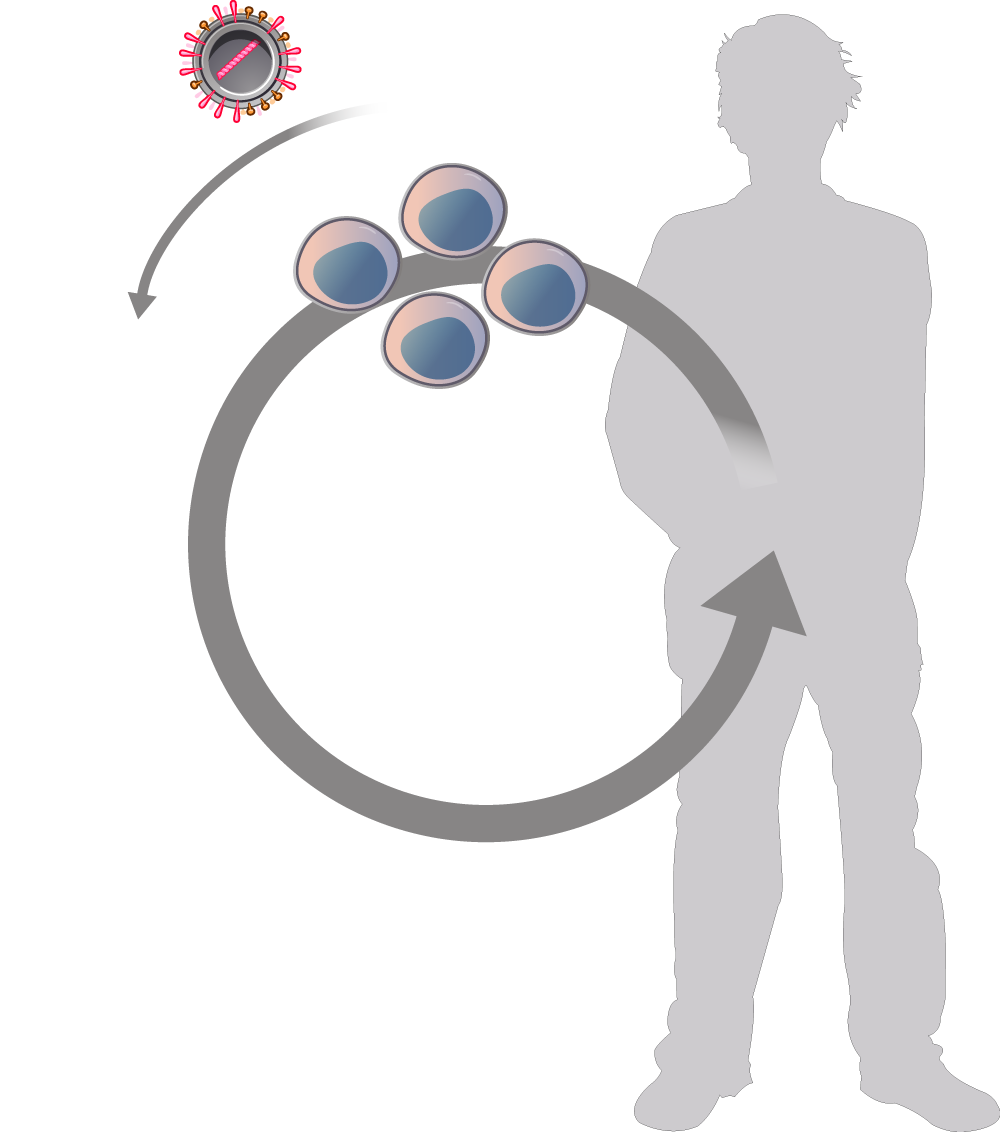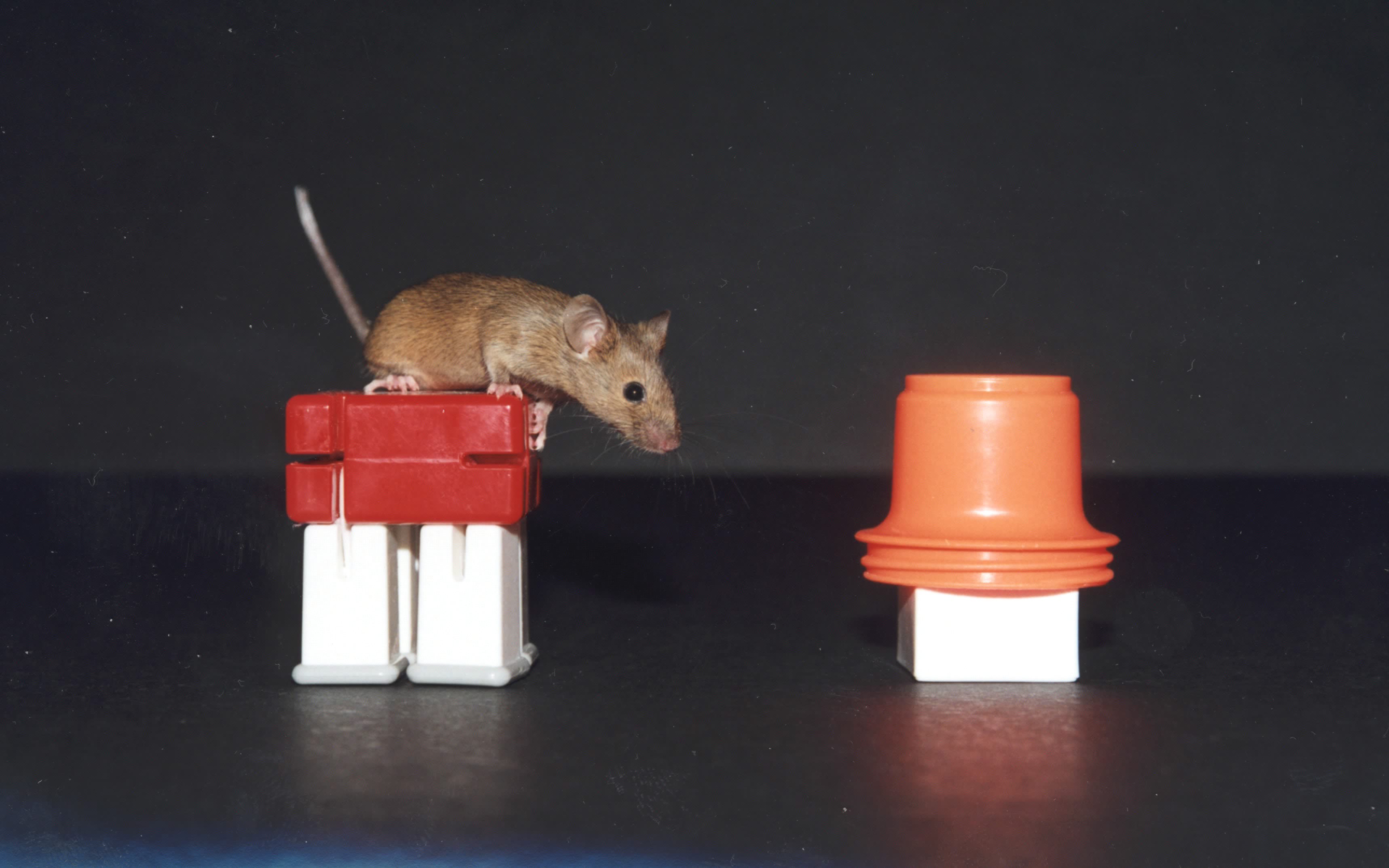I am the most amateur of bloggers and writers.
These are my thoughts and words.
My world, through my eyes. Gladly shared.
A blog about life, humor, and the pursuit of laughter, with some photographs thrown in.
The Avengers 2
On April 22nd The Avengers are back to kick off the summer movie experience early in Avengers: Age of Ultron! This is truly the time of year all you superhero nerds have been waiting for. Although The Avengers is sure to be packed with mind-boggling action, did you ever take a second to think about the real science behind superhero movies? If you didn't, I have put together a nerdy, fun article about the realistic side of our favorite superheros.

The feats performed by Iron Man, Captain America, Black Widow, and the rest of the Avengers crew seem to defy all logic. Before he upgraded to gold titanium, Iron Man used to jet around in a suit made of, well, iron, while Captain America's vibranium shield manages to remain unscathed - even after Thor strikes it with his hammer.
As it turns out, the heroes' super accessories (and abilities) are actually grounded in some very real science.
Take Iron Man's Arc Reactor, which he uses to invent a new element. By smashing together the nuclei of atoms, he's able to create an alternative to poisonous palladium. That's basically how scientists in the real world do it too. So far, at least 20 synthetic elements have been invented using particle accelerators that result in the same kinds of collisions.
To learn more about the element-making taking place at Stark Industries, as well as why it is that Captain America and Black Widow heal so quickly, and what Iron Man's suit is (probably) made of, check out the posts below.
Thor's hammer
Thor's hammer... doesn't weigh that much. According to MARVEL it's 42.3 lbs (19.19 kg) which is still a lot to hold... especially one handed. But the reason the hammer can't be lifted isn't due to weight but because it takes someone who is worthy to wield it.

It's a common misconception that Thor's hammer was forged from a dying star when it was actually forged in one. But let's say it was made out of a dying star, specifically the densest in the known Universe... a neutron star.
Once a massive star dies and goes supernova, the core may collapse to such a degree that the protons and electrons smash together to form neutrons, giving us a celestial body that can contain two times the mass of the Sun within an object that is only 20 kilometres in diameter. The neutron star's density varies from below 1.109 kg/m3 in the crust — increasing with depth — to above 6.1017 or 8.1017 kg/m3 deeper inside (denser than an atomic nucleus). A sugar cube sized amount of neutron star material has the same mass as all of humanity!

Taking the dimensions of Thor's hammer, and assuming it's made entirely out of that material, it would weigh over 5 quadrillion kilograms. So now you have 5 trillion metric tons, about 97 million Titanics, condensed into the size of an American football.
Let's say you and I are having a conversation, I'm holding my hammer, and I accidentally drop it - BOOM! Being alive is no longer a thing you do. In fact, a good portion of humanity has stopped doing the whole living thing. The Tsar Bomb, at 50 megatons, was the largest nuclear weapon ever detonated. Thor's hammer hitting the floor would be 1.3 MILLION times that. The closest comparison would be the Chicxulub Asteroid that's thought to have wiped out the dinosaurs. When the asteroid impacted, debris was ejected out of our atmosphere and upon re-entry, it grew so hot that it glowed white and rained down globally, setting whatever could be lit on fire... on fire. Earthquakes shook the ground, mega tsunamis crashed into land masses, volcanos erupted spraying ash into the air combining with the dust and debris to cover the surface of the Earth and fill the atmosphere, blocking out the Sun.
Since the hammer is so insanely dense and covers such a small area, if you put it on the ground it would drill through the Earth until hitting the core. So it's best not to touch anything with Thor's hammer.
However, it wouldn't even have to touch you to horribly kill you. Newton's Law of Gravity states that any two bodies with mass will attract each other, and we happen to have an object with an incredible mass, squeezed into an incredibly dense package. If you were 30 metres away, you would be pulled towards it at almost 335 m/s2, which is close to the speed of sound. At that point, things get really messy because parts of your body closer to the hammer will experience a stronger gravitational pull than parts that are further away and that difference near the hammer will be so dramatic that your body will ripped apart by them, also known as spaghettification.
If Mjölnir were made of a dying star, it'd be devastating. It would also make Thor one of the strongest super heroes ever. And before we say, "but Christophe, it's magic" remember what Thor said in the first film, "Your ancestors called it magic... but you call it science. I come from a land where they are one and the same." Or in the words of author Arthur C. Clarke "Any sufficiently advanced technology is indistinguishable from magic."
Iron Man's suit
How close are we to a real Iron Man suit?
Okay. If we are just speaking of an armoured suit that augments the strength and weaponry of a person then we are extremely close. If we are speaking of something with all of the primary abilities of the Iron Man character such as flight, clean infinite power and his repulsor beams, that may never become a reality. The current version in the comic books is even more insane than the movies, with a suit made entirely of nanites that can repair or replicate itself and any weaponry on the fly...
So how close are we? First, I'll break down the things we (unfortunately) cannot do, and then, I'll treat you to some really awesome stuff we can...

The Stuff We Can't Do
Flight
We just cannot have a flying suit like Iron Man's. Not exactly, anyway. The main reason for this is the tiny rocket engines and repulsor beams.
Repulsor Beams
One of the key components of the Iron Man suit is its repulsor beams, and that's a kind of technology we may not have anything like for a very long time (if ever). The only logical explanation is that they are some kind of graviton manipulator. This is so far out of our current technological realm that we can't even begin to guess how it could possibly be done with what we currently know.
Arc reactor
It is not entirely clear how the suit's reactor works. It's smaller than a soda can, but can produce more power than the miniature reactor on a Virginia class nuclear submarine. It has something to do with zero point energy and a continuous self sustaining reaction that would appear to break most rules of thermodynamics that we know of. It could possibly be some type of cold fusion reaction, but again, we have no clue how to even begin doing this in such a small size. No reaction is 100 % efficient, so the waste heat alone from such a reactor would likely be enough to cook the person inside the suit.
What We Can Do
Okay. So that was a bit of a letdown. Now, what could we do? The answer is, actually, a lot!
Prototypes
We could almost exactly copy the original Mark I prototype armor from the comics either right now (today) or in the next few years.
The Mark I above is not all that different from Raytheons XOS 2 powered armor suit below. It's stronger than a human and has heavier armor than a person could otherwise carry.
The video below shows how the enhanced strength from the exoskeleton allows a soldier to lift 100 kilograms without any effort at all. A soldier would also then be able to carry a much heavier pack and armor. Lastly, the suit reduces fatigue even for physical activities like pushups. In other words, it does all the work for him.
A prototype design concept for future development, which can also be seen in the background of the video above, lies below.
Not to be outdone, Lockheed Martin has its own powered suit called HULC.
It has less overall strength but still reportedly allows a soldier to carry a 100 kilogram load, and it seems they have working units that can function untethered. Still, there's no word on how much of that 100 kilogram load is currently being devoted to batteries.
Power
While nothing like an Arc Reactor, we do expect a tethered version that could walk alongside a vehicle carrying the suit's generator in three to five years. In this case, it would mostly be used to lift heavy materials in and out of vehicles for deployed soldiers. This would allow a very small team to rearm a vehicle or chopper in the field, while still allowing them to quickly unload bulk supplies and move on out of harms way. In six to 10 years they expect to be able to power the suit with its own internal power supply. The most limiting factor is battery technology, but that is slowly improving.
We would have trouble with finding a power source and would need to recharge frequently. This is actually okay because the Mark I had the exact same issue! The Mark one used "transistors" (capacitors they meant possibly?) to power the suit and allow it to be charged rapidly from any wall outlet. Unfortunately it ran out of juice very often. Still so far so good. You didn't expect us to start out with a Mark VIII dynamic nanite colony suit did you?
Flight
As I stated before, we can't have flight like the Iron Man from the movies, but the Mark I didn't have that capability either. Supposedly, it was still able to make short jumps or bursts of flight using "compressed air". We have actually had designs similar to this for decades.
The military designed a series of "jump jets" or "rocket belts" that used a highly concentrated mix of hydrogen peroxide along with a catalyzing agent to create jets of high intensity steam, allowing a person to fly mostly vertically, which is just what the Mark I did! Some other models used liquid nitrogen instead. Either one can be deadly if the fuel tank ruptures. Being dissolved by 90 % pure hydrogen peroxide or frozen by liquid nitrogen is not a pleasant way to go.
Okay, so that is obviously very cool but with a flight time measured in seconds and a world record of only 45 metres, this won't do for a superhero or a soldier.
Enter the Martin Technology JetPack.
In this video we see the device climb to 1,500 metres and deploy an emergency parachute at 900 metres. This was actually flown by remote control in a chaser helicopter with a dummy, but that also shows how a navigation computer or assistant could help with flight in an emergency. The flight system is bulky but it could be attached to the XOS and used to enter hostile territory. After you arrive, you park it somewhere inconspicuous and move in to deal out some Iron Man-style justice. Just don't forget where you parked it.
Lastly, if all that wasn't enough for anyone dreaming of soaring like a jet as opposed to a tiny helicopter, there is one last option.
Yves "Jetman" Rossy has pioneered a wearable jet flight pack. It has the drawback of not being powerful enough to reach flight altitude on its own, but once in the air, it can perform take on some impressive flight.
As daring innovators like these continue to create amazing devices, it is only a matter of time before some type of human scale personal flight system becomes viable.
Bonus...
Now for the Navy we could go a different route for an Iron Man suit's propulsion.
Yes it does have a small 3 metres long chaser boat and does not fly very high but it could allow for some useful tactical advantages. This thing even runs on normal fuel. It could propel a Navy Iron Man underwater quietly and then allow him to burst up from the water's surface and dispense justice on some modern pirates.
In conclusion...
Yes, we could expect something very similar to Iron Man in the next 3 to 15 years if we are willing to settle for the Iron Man Mark I suit.
The number of ways in which such a device could change the battlefield or dangerous police and emergency rescue operations is almost too many to list. We could also have versions of these suits in use at factories and manufacturing plants around the world. We would no longer need a forklift or dolly for simple yet heavy or tiring jobs, we would become the forklift. The benefits to workers on assembly lines would also be enormous as workers would get fatigued much less often and injuries from strains would be very uncommon.
Eventually technology will allow these suits to work without the human at all, but that is still a long ways off...
Or is it?

Cryptography?
With the increasing incidence of identity thefts, credit card frauds, social engineering attacks, the digital world is facing challenges in the years ahead. Obviously, cryptography, a young science, will play a prominent role in the security of protecting digital assets. I will try to explain the basics of cryptography (encryption) using plain language.
Let us take the example of scrambling an egg. First, crack the shell, pour the contents into a bowl and beat the contents vigorously until you achieved the needed result - well, a scrambled egg. This action of mixing the molecules of the egg is encryption. Since the molecules are mixed-up, we say the egg has achieved a higher state of entropy (state of randomness). To return the scrambled egg to its original form (including uncracking the shell) is decryption. Impossible?
However, if we substitute the word "egg" and replace it with "number", "molecules" with "digits", it is POSSIBLE. This, my friend, is the exciting world of cryptography (crypto for short). It is a new field dominated by talented mathematicians who uses vocabulary like "non-linear polynomial relations", "overdefined systems of multivariate polynomial equations", "Galois fields", and so forth. These cryptographers uses language that mere mortals like us cannot pretend to understand.

In the computer, everything stored are numbers. Your MP3 file is a number. Your text message is a number. Your address book is a longer number. The number 65 represents the character "A", 97 for the small "a", and so on.
For humans, we recognize numbers with the digits from 0 to 9, where else, the computer can only recognize 0 or 1. This is the binary system which uses bits instead of digits. To convert bits to digits, just simply multiply the number of bits by 0.3 to get a good estimation. For example, if you have 256-bits of Indonesian Rupiah (one of the lowest currency denomination in the world), Bill Gates' wealth in comparison would be microscopic.
The hexadecimal (base 16) system uses the ten digits from 0 to 9, plus the six extra symbols from A to F. This set has sixteen different "digits", hence the hexadecimal name. This notation is useful for computer workers to peek into the "real contents" stored by the computer. Alternatively, treat these different number systems as currencies, be it Euro, Swiss Franc, British Pound and the like. Just like an object can be priced with different values using these currencies, a number can also be "priced" in these different number systems as well.
To digress a bit, have you ever wondered why you had to study prime numbers in school? I am sure most mathematics teachers do not know this answer. Answer: A subbranch called public-key cryptography which uses prime numbers especially for encrypting e-mails. Over there, they are talking of even bigger numbers like 2048, 4096, 8192 bits.)
When we want to encrypt something, we need to use a cipher. A cipher is just an algorithm similar to a recipe for baking a cake. It has precise, unambiguous steps. To carry out the encryption process, you need a key (some called it passphrase). A good practice in cryptography needs the key used by a cipher must be of high entropy to be effective.
Data Encryption Standard (DES), introduced as a standard in the late 1970's, was the most commonly used cipher in the 1980's and early 1990's. It uses a 56-bit key. It was broken in the late 1990's with specialized computers costing about US$ 250,000 in 56 hours. With today's hardware, it is possible to crack within a day.
Subsequently, Triple-DES superseded DES as the logical way to preserve compatibility with earlier investments by big corporations (mainly banks). It uses two 56-bit key using three steps:
- Encrypt with Key 1.
- Decrypt with Key 2.
- Encrypt with Key 1.
The effective key length used is only 112-bits (equivalent to 34 digits). The key is any number between 0 and 5192296858534827628530496329220095. Some modify the last process using Key 3, making it more effective at 168-bit keys.
Advanced Encryption Standard (AES) was adopted as a standard by the National Institute of Standards & Technology, U.S.A. (NIST) in 2001. AES is based on the Rijndael (pronounced "rhine-doll") cipher developed by two Belgian cryptographers, Victor Rijmen and Joan Daemen. Typically, AES uses 256-bits (equivalent to 78 digits) for its keys. The key is any number between 0 and 15792089237316195423570985008687907853269984665640564039457584007913129639935. This number is the same as the estimated number of atoms in the universe.
The National Security Agency (NSA) approved AES in June 2003 for protecting top-level secrets within US governmental agencies (of course subject to their approval of the implementation methods). They are reputedly the ones that can eavesdrop on all telephone conversations going on around the world. Besides, this organization is recognized to be the largest employer of mathematicians in the world and may be the largest buyer of computer hardware in the world. The NSA probably have cryptographic expertise many years ahead of the public and can undoubtedly break many of the systems used in practice. For reasons of national security, almost all information about the NSA - even its budget is classified.
Some definitions
A brute force attack is basically to use all possible combinations in trying to decrypt encrypted materials.
A dictionary attack usually refers to text-based passphrases (passwords) by using commonly used passwords. The total number of commonly used passwords is surprisingly small, in computer terms.
An adversary is somebody, be it an individual, company, business rival, enemy, traitor or governmental agency who would probably gain by having access to your encrypted secrets. A determined adversary is one with more "brains" and resources. The best form of security is to have zero adversary (practically impossible to achieve), the next best is to have zero determined adversary!
A keylogger is a software program or hardware to capture all keystrokes typed. This is by far the most effective mechanism to crack password-based implementations of cryptosystems. Software keylogger programs are more common because they are small, work in stealth-mode and easily downloaded from the internet. Advanced keyloggers have the ability to run silently on a target machine and remotely deliver the recorded information to the user who introduced this covert monitoring session. Keystroke monitoring, as everything else created by man, can either be useful or harmful, depending on the monitor's intents. All confidential information which passes through the keyboard and reaches the computer includes all passwords, usernames, identification data, credit card details, and confidential documents (as they are typed).
For the last definition, we will use an example. Let's say you have your house equipped with the latest locks, no master keys and no locksmith can tamper with them. Your doors and windows are unbreakable. How then does an adversary get into your house without using a bulldozer to break your front door? Answer: the roof - by removing a few tiles, the adversary can get into your house. This is an exploit (weakness point). Every system, organization, individual has exploits.
See, it is not that difficult after all! If you can understand the material presented in this post, congratulations - you have become crypto-literate (less than 1 % of all current computer users). If you do not believe me, try using some of this newfound knowledge on your banker friends or computer professionals.
Trophy hunting
I'm sorry, this one is only in Dutch :-) I'll translate it in English one of the following days...
De schutter van de bekendste leeuw van Zimbabwe, tandarts Walter Palmer, is ondergedoken. Op de deur van zijn praktijk hangen posters waarop de tandarts een "lafaard" en een "moordenaar" wordt genoemd. Ocharme. Het is een puur westerse emotie om zo boos te worden over een dode leeuw horen we nu. En: we snappen het weer niet. Nu ja, wat valt daar aan te snappen, aan iemand die een kick krijgt van het doden van een weerloos, bedreigd dier?

Wie het verhaal niet kent, was wellicht op een andere planeet de jongste dagen. Walter Palmer, een tandarts uit Minnesota, heeft tegen betaling van meer dan 50.000 dollar in Zimbabwe Cecil doodgeschoten, de leeuw die boegbeeld was van het nationaal park Hwange. Hij was onderdeel van een onderzoeksproject van de universiteit Oxford en droeg een gps-halsband. De leeuw dankte zijn beroemdheid aan zijn populariteit onder de toeristen en werd het gezicht van het nationaal park waarin hij leefde. Toeristen betaalden veel geld zodat ze Cecil op de foto konden zetten.
Cecil werd 's nacht uit het nationale park gelokt waar hij woonde. Daarna werd hij met pijl en boog beschoten en raakte hij gewond. De volgende dag vond Palmer de gewonde leeuw en maakte hem af.

Onze vriend heeft ondertussen spijt betuigd dat hij Cecil heeft omgelegd. Alleen: hij heeft geen spijt over het feit dat hij een pak geld betaalt om elke zoveel maanden ergens in de wereld een bij voorkeur zeldzaam dier dood te gaan maken, gewoon omdat hij dat leuk vindt. Shit, gewoon de verkeerde leeuw, speelt er in zijn hoofd nu. In een excuus naar zijn patiënten toe stelt Palmer dat het een probleem van de media is, die de zaak buiten proporties heeft geblazen. Zomer, komkommers, al die dingen he.
Het probleem zit in je hoofd
Wel, beste tandarts, het is geen probleem van de media. Het is een probleem in je hoofd. De essentie van de zaak is dat de meesten onder ons het niet verkropt krijgen dat iemand een dier vermoordt omdat hij dat leuk vindt. Zo leuk dat hij er fortuinen voor neerlegt.
Bovendien zijn de meesten onder ons ervan overtuigd dat de wereld sowieso een mooiere plaats is als leeuwen, ijsberen, olifanten, luipaarden er nog een plaats in het wild hebben. Palmer heeft de jongste jaren minstens 43 exemplaren van bedreigde diersoorten vermoord. In datzelfde excuus naar zijn patiënten geeft hij ook gewoon toe dat hij het leuk vindt: hij heeft het over een "activity I love". En, het was in zijn ogen legaal, en weet je, als het mag, wat kan er dan in godsnaam mis mee zijn?

Illusie
Here's some news, dentist: heel veel mensen, de meesten echt wel, vinden wat je doet verwerpelijk. Het gaat hen niet zozeer over het feit dat je Cecil hebt vermoord, de verkeerde en toevallig de populairste leeuw in Afrika (hoewel: had u er al van gehoord?).

We hebben het bijzonder moeilijk met die hele industrie waar mensen geld betalen om voor hun plezier een majestueus schepsel aan z'n einde te helpen en dat dan bovendien nog verantwoorden door te stellen dat het doel de middelen heiligt. Die illusie, dat trophy hunting goed is voor de duurzaamheid van de fauna, de zaken van de natuur in evenwicht helpt houden en bovendien nog aardig geld opbrengt voor die sukkelaars in bijvoorbeeld Afrika, die illusie is te doorprikken met het gemak waarop klojo's als Palmer zo'n beest omleggen.
Remember Axelle?
Ook al omdat we met lede ogen moeten vaststellen dat het blijkbaar alleen maar erger wordt. Een goed jaar geleden was er die WK-babe, dat überbelgische knappe mieke dat voor onze Duivels aan het supporteren was. Bleek ook al in Afrika beesten te zijn gaan schieten. Het liet een vies smaakje achter in onze mond.
Er was die veiling in Dallas om één van de 5.000 nog resterende zwarte neushoorns te mogen gaan doodschieten. Eén of andere jan-mijn-kloten legde daar 350.000 dollar voor neer. In april tweette Ricky Gervais een foto van een blonde trut die lachend poseerde naast een giraf die ze had vermoord. De moeder van vijf antwoordde doodleuk dat ze er geen seconde spijt van had, en weet je, 't was niet echt een jonge giraf, hij zou toch doodgegaan zijn. "By shooting him, I have honoured his life by making his body useful to locals: his tail will make jewellery and his bones can make other things". Jezus. En: "I'm no game biologist, but there is no question that hunters contribute the most to the welfare of wildlife."

Links versus rechts
De dame in kwestie was inderdaad geen biologe. Anders zou ze zo'n onzin niet uitslaan. Telkens zijn de heren en dames jagers verwonderd dat die dingen ons degouteren. Sommigen hebben zelfs geprobeerd om er een links versus rechts-discussie van te maken, wat alleen maar bewijst in wat voor een bizarre, ziekelijke realiteit die mensen leven. Als we beginnen geloven dat het doden van iets voor je plezier fundamenteel neerkomt op een politiek ideologische discussie, dan kunnen we misschien maar beter ineens de stekker uit onze maatschappij trekken, euthanasie plegen en het gewoon allemaal teruggeven aan de dieren.
Drie procent
In de jaren zestig waren er nog 70.000 zwarte neushoorns, nu nog 4.999 dus. De populatie van Afrikaanse leeuwen is iets van een 32.000, wat de helft minder is dan 30 jaar geleden. De lijst is lang van lotgenoten in het dierenrijk. Zeggen dat een bedreigde diersoort neerschieten bijdraagt tot de duurzaamheid ervan is hetzelfde als even met een waaiertje wuiven en zeggen dat je global warming aan het stoppen bent.
Het argument dat het geld dat neergelegd wordt om een bedreigd dier af te schieten, ook daadwerkelijk helpt in conservatie, is overigens onzin. Amper drie procent van dat geld vindt z'n weg naar projecten die echt helpen om dieren van uitsterven te houden. Eenzelfde percentage gaat effectief naar de plaatselijke bevolking. Het meeste verdwijnt gewoon in de zakken van de professionele jagers en de bedrijven waar die voor werken die de schiettoerist moeten begeleiden.
In de zeven Afrikaanse landen waar je tegen betaling dieren kan gaan doodschieten, genereert dat jaarlijks iets van een 200 miljoen euro. Sowieso is dat 100 keer minder dan wat in diezelfde landen toeristen jaarlijks binnenbrengen die gewoon foto's van die dieren willen nemen.

(Te) simpele oplossing
Tiens, hier is een idee: als die heren en dames die nu betalen om bedreigde dieren te kunnen vermoorden omdat ze (zeggen) ervan overtuigd zijn dat ze daardoor bijdragen aan het voortbestaan ervan en omdat ze eigenlijk die dieren toch zo graag zien nu eens gewoon dat geld geven en niet schieten? Ze doen het uiteindelijk toch voor de dieren beweren ze?
Het is ook te makkelijk om de fout alleen maar te leggen bij de landen die de vergunningen verkopen. In een ideale wereld zouden ze dat inderdaad niet mogen doen, maar, en da's dan weer een moeilijke: zijn we bereid om hen daarbij te helpen? Of om het even heel concreet te stellen; is iedereen die nu gedegouteerd is bereid om z'n portemonnaie open te doen en te geven in de mate dat dat niet meer nodig zou zijn? Laat ons eerlijk zijn: nee. Dat gaat niet gebeuren. Er is nog iets.

Nuances
Hoewel ik het zelf nooit zou kunnen, ben ik al in delen van de wereld geweest waar het jagen op sommige dieren wel degelijk te begrijpen valt. Er zijn immers nog steeds mensen op deze planeet, steeds minder weliswaar, die dat echt moeten doen om te overleven. Je kan hen oneerbiedig primitief noemen, of stellen dat de tijd hun geïsoleerde gemeenschap nog niet heeft ingehaald. Mijn ervaring is dat die mensen niet voor de lol beesten vermoorden, integendeel, ze nemen wat ze nodig hebben, en dat soort, nou ja, stammen, heeft doorgaans ook best strikte regels over wanneer wat gedood mag worden opdat toekomstige generaties dat ook nog zouden kunnen doen.
Er is nog een andere uitzondering: soms moet het wel degelijk gebeuren om het natuurlijk evenwicht in stand te houden. Je kan er immers niet om heen dat we als mens nu eenmaal al duizenden jaren impact hebben, en dat de natuur zich daar toch wel wat heeft naar gezet in sommige delen van de wereld. Wetenschappelijk ondersteund en verantwoord ingrijpen is dan vaak ook voor het geheel van de fauna niet zo'n slechte zaak.
We zijn leeuw, toch voor 90 % dan
Wat jagers zoals Palmer niet snappen, los van het feit dat de meesten normale mensen niet die kronkel in hun hoofd hebben die het doden van iets "plezant" maakt, is dat we ondertussen weten dat we eigenlijk zelf niet meer zijn dan slimme beesten. We delen 96 % van ons DNA met chimpanzees bijvoorbeeld. Maar ook 90 procent van de genen van zowel die kat bij je thuis als die leeuw die doodgeschoten is.

We weten dat we gezamenlijke voorouders hebben, hoewel we daar even moeten voor teruggaan, maar hey, 90 miljoen jaar geleden waren leeuw en mens nog hetzelfde. Het punt is hier: we leven niet meer in een wereld waar we onszelf mogen beschouwen als iets wat één of ander godheid uit klei boetseerde vanuit het idee dat we beter waren dan de rest van de sculptuurtjes die - duh - geschapen werden. We leven in een wereld waarvan we weten dat we misschien wel slimmer zijn, maar niet per se beter. En dat dat eerste vooral verantwoordelijkheid met zich meebrengt.
Een paar weken geleden ging ik 's ochtends de post uithalen en stond aan de andere kant van de straat toch geen reetje zeker? Ik weet niet hoe het met u zit, maar mijn eerste reactie was niet meteen "shit, ik heb mijn kruisboog niet bij". Nee, het was "wow". De tweede was: "dat het nu maar stilletjes terug het bos in gaat voor een pipo het overhoop rijdt".
Andere discussie & kicks
Ik ga ervan uit dat de meesten onder ons zo denken, en ik ben er eigenlijk van overtuigd dat omdat we zo denken de wereld aangenamer is. Uiteraard zijn we allemaal in zekere mate hypocriet. Natuurlijk kunnen we genieten van dat stukje vlees op ons bord. Maar dat is een heel andere discussie, eentje die het ook wel verdient om gevoerd te worden, maar het is niet waar dit over gaat.

Dit gaat over hoe mensen doden voor de kick van het doden en dit gaat over gezond verstand dat dicteert dat het echt wel idioot is om zeldzame dieren bewust nog zeldzamer te maken. De realiteit is dat we als maatschappij ondertussen beslist hebben dat we noch het eerste noch het tweede tolereren. En het is waarom de Palmers van deze wereld geen respect verdienen, waarom er een einde moet komen aan de dingen die hij doet.

Bonus: twee extra bedenkingen
Hier is nog iets interessant. Zeker niet allemaal, maar het grootste deel van de idioten die veel geld neerleggen om bedreigde dieren dood te schieten, komen uit landen waar ze bijzonder lakse wapenwetten hebben. Laten we gewoon even eerlijk zijn: de Verenigde Staten op kop. Deze week dook een - tenminste voor mij - bijzonder schokkend filmpje op van een manneke van vier dat aan het spelen is met een echt pistool en "speelt" dat hij zijn zusje, dat niet eens kan lopen, "gaat vermoorden".
De papa filmt het, alsof het de normaalste zaak van de wereld is. De kleine, die zijn eigen naam nog niet kan schrijven, toont in dat filmpje dat hij verdomd goed weet hoe dat wapen werkt. Hoe hij er de kogels moet insteken, hoe de safety af moet voor hij zou kunnen schieten... De helft van de reacties in de VS daarop zijn er van afgrijzen. De andere helft vindt het blijkbaar knap dat iemand van die leeftijd al "weet hoe hij met een vuurwapen moet omgaan".
In dezelfde week viste weeral (het is een paar maanden geleden nog eens gebeurd) een kleine van twee jaar die met zijn mama aan het winkelen was in een shopping mall de revolver van moederlief uit haar sacoche en schoot zijn moeder dood. En ging er alweer een gestoorde man (hoe noem je zo iemand anders?) aan het schieten in een bioscoop.
En hoe meer die dingen gebeuren, hoe minder Amerikanen blijkbaar de link kunnen leggen tussen hun lakse wapenwetten en de tragedies die gebeuren met vuurwapens in hun midden. Je kan toch niet anders meer dan concluderen dat een groot deel van de mensen in wat dan de leidende natie op deze planeet heet te zijn, gewoon dol is op schieten en geweren en geen benul meer heeft van wat die dingen aanrichten.

The Purge-mindset
Een tweede extra bedenking is deze: de bedragen die een select groepje mensen neerlegt om het plezier van iets te doden te kunnen beleven, zijn in mijn ogen hallucinant. We hebben het hier over mensen die makkelijk elk jaar het bedrag van een mooie gezinswoning, iets waar de meesten onder ons met twee een leven lang moeten voor gaan werken, overhebben om een paar keer de kick van het doden te kunnen beleven.
Je hebt misschien The Purge gezien. Science fiction hoor. Alleen, het is al ooit gebeurd. Op het hoogtepunt van het Romeinse rijk, dat veel mensen nog beschouwen als het fundament van onze huidige beschaving, werd er door compleet gedegenereerde Romeinen geld betaald om slaven te kunnen jagen (en vermoorden). Vandaag de dag is dat gelukkig het domein van urban myths en spannende films, maar je kan jezelf de vraag stellen welke grenzen mensen nog kunnen trekken die zonder verpinken fortuinen leggen om een fantastisch dier om te leggen voor de kick. Want het probleem met kicks is toch dat die steeds groter moeten worden, niet?
Cruel bombs

Every cloud has a silver lining.
Except nuclear mushroom clouds, which have a lining of Strontium-90, Caesium-137 and other radioactive isotopes.

Upon detonation, atoms are literally gutted and glutton at temperatures exceeding that of the surface of our Sun. In the 1950s, Harold Edgerton's rapatronic camera (for Rapid Action Electronic) caught nuclear fireballs less than a thousandth of a second after detonation. Using a special magnetic shutter, each exposure lasted only a billionth of a second and captured an other-worldly creature, its energy vaporising the metal wires supporting its tower into stringing legs of plasma.
Watch the target on the ground. Now, roughly visualized, here is a conventional TNT explosion. Now, on the same spot, a similarly sized bomb that uses nuclear fission.
When 'Little Boy' was detonated over Hiroshima only 1.38 % of its uranium actually fissioned. The rest was blown away before that could happen, which means, the fission of merely 0.7 grams of uranium, that's less than the weight of a banknote, was enough to kill 80,000 people and destroy two-thirds of city's buildings.
When a country has tens of thousands of nuclear weapons ready to go, accidents are a possibility. This was a problem during the Cold War and it still is a problem. What if there is a fire or a miscommunication or a rogue officer decides to set one off. Or what if someone just drops a warhead? How much risk is too much? The acceptable probability of the detonation of a nuclear weapon in an accident is one in a million. In 2012, the odds of your dying in a commercial airliner accident were about one in forty million. So that's even more remote than the accidental detonation of a nuclear weapon.

There have been 'oopsie daisy' moments with nuclear weapons. Luckily, none that resulted in critical mass but accidents nonetheless. Just like when you pee your pants, except your pants are the entire planet and the "P" stands for Plutonium. Eureka comes from ancient Greek, meaning "I have found it!" And in Eureka, North Carolina you can find it. A giant sign that says "Nuclear mishap". On January the 23th of 1961, a US B-52 bomber carrying two 4 megaton thermonuclear bombs over North Carolina tumbled from the sky. A loose lanyard in the cockpit snagged the bomb release switch. Each bomb contained a greater explosive yield than all munitions ever detonated by mankind combined. Luckily, they didn't detonate!

Lieutenant Jack ReVell discovered that only one safety mechanism didn't fail that day. A single low voltage arming switch remained untouched during the crash. And that one switch is why we don't have a bay where North Carolina is today. The bombs were recovered... mostly. The uranium-rich Secondary of one of the bombs was never found. To this day it remains buried underground in North Carolina.

Here's something you can try at home. Build a nuclear reactor. In 1994, a 17-year-old David Hahn attempted to build a nuclear reactor in his mother's backyard in Michigan. It wasn't that difficult. For instance, common everyday smoke detectors contain small amounts of radioactive Americium. And old glow in the dark paint contains Radium. His reactor never reached critical mass but it did succeed in exposing his neighbourhood to 1000 times the regular dosage of background radiation. It was declared a Superfund hazardous materials cleanup site and all of his work was confiscated by authorities and buried in Utah. It didn't end there. In 2007 David Hahn was arrested for stealing smoke detectors from an apartment building. His face was covered with sores believed to be caused by constant exposure to radioactive materials.

Three days after Little Boy was dropped on Hiroshima by the 'Enola Gay' Boeing B-29, Charles Sweeney was ordered to drop Fatman on Kokura. He flew the B-29 Superfortress 'Bockscar' over the city for nearly an hour with the bomb bay doors open, but it was cloudy. Sweeney couldn't achieve visual confirmation of the target and was forced to go to the secondary target - Nagasaki, where 75,000 people died instead. Kokura was spared because of the clouds.
We can build a weapon that mimics the furnace of our Sun and the winds of Neptune but yet we can't predict the weather more than a few minutes ahead of time.
During World War II, Japanese soldiers spot for their emperor in ways that made allied troops speechless. Kamikaze planes and torpedoes, driven by a single pilot, lost after use. When outnumbered, without hope, Japanese soldiers were reported to have thrown themselves off clips or swam out to sea to drown rather than surrendered. Even after two atomic bomb attacks, the Japanese Minister of War urged his people to continue fighting. But on August 14th, 1945, the Emperor of Japan overruled that decision and unconditionally surrendered. Men had leapt of off cliffs for him, but in his own words: "the enemy has for the first time used cruel bombs."
The heavy casualties are beyond measure.

Richard Feynman received the Nobel Prize in Physics in 1965. He also helped develop the first atomic bomb at Los Alamos. In "The Meaning of It All," he wrote "Is science of any value?" And below that, "I think a power to do something is of value." He elaborates by talking about keys. Everything we learned about the universe, everything we invent or discover within it, is a key to the gates of heaven. But the same key will also open the gates to hell. The Titan II Missile is great for delivering lethal nuclear warheads. But it also sent Gemini astronauts to space, preparing us for a mission to the Moon. Science doesn't tell us how to use keys. It finds them or predicts them. How we use keys is up to us.
Inside a black hole
Today we are going to go inside a black hole. It's not going to be comfortable, but it will be pretty fun.
Now, first thing's first: mathematically speaking, anything could become a black hole, if you were to compress it into a small enough space. That's right, you, me, this screen - everything in the universe has what is known as a Schwarzschild radius. A tiny, tiny amount of space that, were you to collapse the entire mass of the object into, its density would be so great that its gravitational pull would be so great that not even light could escape from it. You would have a black hole. If you were to compress Mount Everest into something smaller than a nanometre, you would have a black hole. And if you were to compress the entire Earth down to the size of a peanut, you would have a black hole.
But, fortunately for us, there is no known way to compress Everest or Earth in that fashion. But a star, many, many, many times larger than our own Sun, has a much larger Schwarzschild radius, and when it runs out of fuel and can no longer keep itself hot enough, it collapses to a single, infinitesimally-small point known as a singularity. Its density will be infinite and so its gravitational pull will be so strong that nothing can escape, not even light.
But enough about ways black holes form, let's jump into one. First question: what would it look like from the outside? Well, we know that gravitational fields bend space and time. Stars behind our Sun will actually appear to be in slightly different locations from Earth, because the Sun's gravitational field bends the light coming from those stars. When it comes to the gravitational fields of larger objects, like entire galaxies or, for that matter, a black hole, the effect is even nuttier. Light coming from object's behind them is significantly distorted, producing smears and smudges.

As seen from Earth (3), the blue galaxy (1) behind this red galaxy (2) is completely distorted, like a fun house mirror.

So, rather than appearing as it really should, it looks to us like a ring - a smudge all the way around the red galaxy. This is known as gravitational lensing.

Now, take a look at this simulation of a black hole with a galaxy millions of light years behind it. The galaxy's really not in danger of the black hole's "suck", but the light coming off of that galaxy certainly is. Watch as the galaxy passes behind the black hole and its light is contorted, twisted and distorted.

Now here's a really fun demonstration. What if the Earth were to orbit around a black hole? Looking from the outside, the Earth would look normal at first, but as soon as it passed behind the black hole, the black hole's gravitational field would warp the light reflecting off the Earth, producing this.
For the sake of simplicity, let's jump into a simple black hole, one that doesn't have a charge and isn't moving. And, also, isn't already sucking up a bunch of matter. So it's just there on its own. As we approach, the distortion of the sky grows greater and greater. A larger and larger portion of our field of view looking forward into the black hole will be filled with darkness. At this point, where half of our field of view has been swallowed up in darkness, we have reached the Photon Sphere. At this point, light is not going to necessarily get sucked into the black hole, but it doesn't necessarily leave it either. Instead, at this magical point in space, light, photons, can actually orbit the black hole. If you were to stop here for a moment and look to the side, you could theoretically see the back of your own head, because light reflecting off the back of your head would travel all the way around the sphere of the black hole, right back to your face. A gravitational field not only warps space, it also warps time.

Now, for most intensive purposes here on Earth, we never have to worry about that. But near a black hole, gravity would be so strong that an observer standing, watching you jump into the hole, would see something quite strange. They wouldn't see you get sucked quickly into the hole. Instead, they would see your approach become slower, and slower, and slower, until you reached a point known as the event-horizon. This is a point in space where, once crossed, there's no going back. It is at that point that light can no longer escape. And, so, to a person watching you fall into the hole, that would be where your journey ended. You would seem almost frozen in space, the light coming off your body becoming increasingly red-shifted until you simply faded into nothingness. They would never see you cross the event-horizon. But for you, of course, everything would seem fine and dandy. You would continue pass that horizon to your now, inevitable, death. As you continue to approach the black hole's singularity, your view of the entire universe would get compressed into a smaller and smaller point in space behind you. If the black hole we're jumping into was large enough, things actually might be quite comfortable at that event horizon. We'll know that we're never going to escape and that our lives are pretty much over, but it might take us hours to actually reach a point where things started to hurt. Why would they hurt? Well, the closer you get to the singularity, the more significant the difference in gravitational pull is across space. And, so, parts of me that are closer to the singularity would be pulled more strongly than parts that were facing away and my entire body would be stretched toward the singularity. The effect would be so incredible, scientists don't usually call it stretching, they call it Spaghettification. Once you reach this point, you would be dead. Your molecules would be violently ripped and stretched apart, and when they got to the singularity, well, we don't really know what would happen. Perhaps they would completely disappear in violation of all the laws of physics or maybe they would reappear elsewhere in the universe.

It is believed that a moving or spinning black hole might actually create what is known as a wormhole, a way of transitioning across space faster than light. Not in any way that violates the laws of science, but in a way that takes advantage of the universe's dimensions. For instance, if I wanted to get from the Earth to this bue star, I'd have to travel the distance (indicate as a red arrow). But, theoretically, a wormhole would do something really crazy. For instance, this. Now, the two points are right next to each other and I can travel between them almost instantaneously.
But, again, this is all theoretical. Luckily, we do have a possible way of analyzing black holes right here on Earth. Enter the Dumbhole. Just as a black hole does not permit light to escape, a Dumbhole is an acoustic black hole. It won't allow sound to escape. It doesn't have to be nearly as powerful and scientists have been able to create Dumbholes in laboratories using special fluids traveling at the speed of sound.A lot of progress still needs to be made in the world of acoustic black holes, but we may be able to learn an amazing amount of information about how black holes work by looking at how sound is treated in a Dumbhole.
Now here's another good question: What would it look like to travel at the speed of light, say, toward the Sun? Well, surprisingly, you wouldn't just see the Sun immediately rush up toward you. No, no, no. In fact, initially, it would look almost as if the Sun were receding away from you. Why? Because your field of view would vastly increase in size. You would be able to see stuff almost behind you. And here's why. As you sit there, not moving yet, looking at the Sun, there's light coming from stuff behind you. But, if you travel the speed of light, you will actually reach that light coming from things behind you. As you reached light speed, your field of view would expand, concentrating the stuff in the middle.
But where are you in the universe? Or, here's a better question. Where is the centre of the universe? Well, this might sound crazy, but it's everywhere. This is known as the Cosmological Principle. No matter where you are in the universe, everything else will seem to be moving away from you, expanding, at the same rate. The universe is expanding, but not like a balloon getting bigger with all the people inside it. Instead, it's as if we are the surface of a balloon. If you were to put a bunch of dots on a balloon and then blow it up, all the dots would move away from each other at the same rate. And, on the surface of the balloon, there is no centre.


Take a look at these two layers. They are exactly similar, except the top layer represents a 5 % expansion of the bottom layer. Let's say that you live on one of these dots, and you want to measure where everything is moving away from. Well, watch what happens when you line up a dot in the past and the present. Boom. It looks like the centre of the expansion. You can do this with any dot. As soon as you choose a dot to be the frame of reference, it immediately becomes the centre of the expansion.
So, while dying in a black hole would be lonely, and scary, and morbid, when you look up into the sky think instead about this. No matter where you are, or who you are, or what your friends or your parents, you really, scientifically, are the centre of the universe.
Finally, what if our universe was a googolplex meters across? It is nowhere near that large. But, if it was, it would be so voluminous that, statistically, it would be nearly impossible for there not to be an exact copy of you somewhere else out there in the universe.
What's wrong with IE?
It's common knowledge that almost every single computer freak hates Internet Explorer with a passion, but have you ever wondered why? Let's take a fair look at the history and where it all began... for posterity, if nothing else.
Contrary to what you might think, this article is not meant to be a hate-fest on Internet Explorer - in fact, since IE 9, they have continued to improve the performance, add new features, and generally make it standards-compliant.
A time-lapse of the most popular browsers
There was a time Microsoft's Internet Explorer dominated the world, which is actually not that long ago. Not such a suprise however, since this browser was a standard component of every Windows PC. Ever since IE's leading role, other players have emerged in the browser world. These fascinating maps illustrate the 'Game of Browsers'.
2008Internet Explorer dominates worldwide.
Read more
2009The surprising popularity of Opera in Eastern Europe.
Read more
2012The battle of the three giants: IE, Firefox and Chrome.
Read more
2013Chrome's worldwide domination takes off.
Read more
2014Safari is widely popular in Greenland.
Read more
2015Chrome - the global gateway to the web.
Read more
In the beginning there was IE, and it was good?
We've all been so used to thinking of Internet Explorer as that slow, buggy browser that is behind the times, but it wasn't always that way. A long way back, Internet Explorer pioneered many innovations that made the web what it is today.

Here's a quick tour through the easily forgotten history of the infamous browser:
1996: Internet Explorer 3
This version of the browser, introduced in 1997, was the first browser to implement CSS (Cascading Style Sheets). Yes, you're reading that correctly - in fact, it introduced many new features like Java applets and sadly, ActiveX controls.
1997: Internet Explorer 4
IE4 introduced a blazing fast (at the time) rendering engine as an embeddable component that could be used in other applications. This was a lot more important than people realize! This version also introduced Dynamic HTML, which allows web pages to dynamically change the page using JavaScript, and added Active Desktop integration.
Even more weird? Seems like nobody remembers this anymore, but IE4 was actually cross-platform! You could install it on Mac OS, Solaris, and HP-UX - and by the time IE5 was released, IE4 had reached a 60 percent market share.
1999: Internet Explorer 5.x
Microsoft invented Ajax. Wait... what? That's right, it was this version of IE that introduced the XMLHttpRequest feature in JavaScript, which forms the underlying technology behind every web application you're using today - you know, like Gmail. Of course, the term "Ajax" wasn't actually coined until years later by somebody other than Microsoft, but this release supported everything required to make it work.
So Yes, Microsoft Innovated
From IE3 until IE6, Microsoft used all their resources to simply out-innovate the competition, releasing new features and better browsers faster than Netscape. In fact, Netscape 3 Gold was a buggy piece of junk that crashed all the time, and Netscape 4 was extremely slow and could barely render tables - much less CSS, which would often cause the browser to crash.
To put it in context: web developers used to complain about Netscape the same way they complain about IE6 now.
What made it go so very wrong?

The trouble all started when Microsoft integrated IE into Windows as a required component, and made it difficult to uninstall and use an alternate browser. Then there was the whole business with them exploiting their monopoly to try and push Netscape out of the market, and a lot of people started to view Microsoft as the evil empire.
Microsoft stopped trying
By the time Microsoft released Internet Explorer 6 in 2001, complete with lots of new features for web developers, since there was no competition and they had a 95 percent market share, Microsoft just stopped trying. Seriously, they did nothing for five years even after Firefox was released, and users started migrating left and right.
Microsoft-specific features
The whole problem with Microsoft's innovation is that much of it was done in ways that didn't follow the web standards. This wasn't as big of a problem when Internet Explorer was the only game in town, but once Firefox and Webkit came around and started following the standards correctly, suddenly it became a huge problem for web developers.
Security holes and crashing
Since Microsoft decided they didn't need to try anymore, and they didn't keep up with the competition from Firefox and other browsers, bugs and security holes just cropped up left and right - really terrible ones, too. For instance, this code is all that is required to crash IE6:
<script>for(x in document.write){document.write(x);}</script>
In fact, the screenshot at the beginning of this section was a live example of testing out this particular bug.
IE7 and IE8 were too little, too late
It took five years after IE6 for Microsoft to finally get around to releasing IE7, which added tabs and made the browser slightly more tolerable. But for web designers, it was still a nightmare to deal with. It only complicated the issue since now you had to make pages render correctly in two lousy browsers instead of just one.
It took another 2.5 years for Microsoft to finally release Internet Explorer 8, which greatly improved CSS support for web developers, and added new features like Private browsing, tab isolation to prevent one bad page from taking down the whole browser, and phishing protection. By this point, most geeks had already moved on to Firefox, and then some of us to Google Chrome.
Here's the real reason geeks hate IE




Just because we're computer freaks doesn't mean we hate everything that's inferior and outdated. In fact, we often love retro computing - that's why we love Atari, NES, Commodore 64, etc. We take pride in our geek knowledge. So why's Internet Explorer a different story?
Here are a couple of reasons that fuelled our hatred of the buggy browser, and finally put us all over the edge:
Supporting IE is like a fork in the eye for web developers
Here's a sample of a day in the life of a web designer: You spend hours making sure that your page looks great, and you test it out in Google Chrome, Firefox, Safari, and even Opera. It looks great, awesome!
Now you open up IE and the page looks like somebody put it into a blender and hit the Whip button. Then you spend double the amount of time trying to fix it to look tolerable in IE6 and IE7, cursing loudly the entire time.
Luckily by 2014, Internet Explorer 6 and 7 are a statistical anomaly in actual Internet usage, and most of the bigger websites have completely stopped supporting them. Even Internet Explorer 8 usage has dropped to single-digit percentages for many websites.
Computer freaks being forced to use Internet Explorer
And here's where we come to the real issue - the whole reason that computer freaks can't stand Internet Explorer:
Users everywhere were forced to use Internet Explorer at work even when there are better browsers, forced to support it for corporate applications, forced to make sure web sites still work in IE, and we couldn't convince everybody to switch to a better browser.
Computer freaks don't hate something that's inferior, but they do hate it when it's forced on them.
The good news: the future is brighter for IE
Thankfully, it seems like Microsoft has finally learned from their many, many mistakes in the browser world. Internet Explorer 10 and 11 are blazing fast, mostly standards-compliant, and other than the outdated UI that really needs some love, are a solid choice for anybody.
Finally, Microsoft has even released a better user interface for IE in Windows 10: Microsoft Edge. There's hoping!
In fact, based on recent testing, a lot of the new malware isn't even targeting Internet Explorer anymore. That's because writing plugins for IE is a complicated thing, whereas writing some quick HTML and JavaScript code to make spying adware extensions for Firefox or Chrome is really easy.
It's a whole new world, and Chrome and Firefox, rather than IE, are the targets.
Can we genetically modify ourself?
How would you like to be better? We don't get a say in what our genetics say, in those 6 billion letters of DNA that make us... us, but what if we did? Now, we might not be able to adjust our DNA like in the game series BioShock where plasmids, gene tonics and vigors allow you to enhance your genetics to such a degree that you're shooting out bees or electricity. But what about increasing your strength, your speed or your mind?

Can you genetically enhance yourself?
First we should start by treating or preventing whatever illness we might already have using Gene Therapy. Let's draw this one out...









Simply put, Gene Therapy is when you insert extra DNA into your cells in an effort to replace or fix a mutated gene. The common method of delivery is inserting the genetic information into a virus, using it as a vehicle or vector, to enter the cell.

Gene Therapy has been used to treat diseases like Severe Combined Immunodeficiency, leukemia, and Leber's Congential Amaurosis - a disease that causes loss of vision. If we can replace certain genes, could we genetically enhance our own to increase something like strength? Well, we already have... in mice. Called "Schwarzenegger Mice", scientists injected a gene that created a specific protein, IGF-1, to increase their muscle mass around 40 %. As they aged, their strength stayed the same as when they were young.

But what if we want speed? Well, there's mice for that too. They were given a gene that encoded a fat burning protein creating "Marathon Mice" that could run faster and twice the distance of normal ones.

And then there is the mind... In 1999, researchers from Princeton University genetically modified mice, called "Doogie", to increase their intelligence. By inserting one certain gene, NR2B which stimulates a receptor in the hippocampus, the mice could associate one event to another better and faster, increasing their memory and ability to learn. Interestingly, as these mice aged, their intelligence remained unchanged unlike other mice which experienced gradual decline in cognitive functions.
Strength, speed and intelligence are only some of the of the genetic modifications successfully performed on animals. There are goats that produce spider silk, hypoallergenic cats, and a variety of glow-in-the-dark animals.

But my favourite is the GloFish. GloFish were one of the first genetically modified animals to be sold as pets. They gain their colour by being given fluorescent protein genes that are found in things like jellyfish and coral.
GloFish are patented, trademarked and owned by a company. So if we can modify and enhance animals, and then market and sell them... how long until I can go to the store, buy some new genes to inject and make myself stronger? And that's where things get complicated...
Let's say you want to be taller, well, there are over 180 genes that contribute to your height. So, which ones do we change? Furthermore, exact control over where the new gene goes is limited, meaning it could negatively impact other genes. Even when scientists know what to modify on which spot in the DNA string, it might end up changing something else, for the worse. We can't directly control where the gene goes- it can attach, disrupting other genes.
For example, out of 30 people treated for SCID, 5 developed cancer.
When experimenting on human beings, the margins for error are a lot less than with animal test subjects. So we might not be able to inject genetic power-ups right now and witness immediate results like in BioShock. But survival of the fittest isn't solely about who is the strongest or fastest, it's who is best adapted to their environment. We live in a timewhere we are increasingly adapting the environment to us and with that, intelligence has become one of the strongest assets. So is there a way that you could genetically increase your offsprings' intelligence?
Can you genetically improve intelligence?
Whether you have an IQ of 50 or 150, we all like to feel smart. After all, the minds of intelligent people like Einstein, Tesla or Stephen Hawking have no doubt helped shape the world we live in. So is it feasible that we could genetically improve the intelligence of our entire species?
Deoxyribonucleic acid (DNA) is the basic code of life found in every living organism. And this DNA is made up of genes, which, in turn, are made up 4 smaller parts called nucleobases, represented by the letters A, T, G and C - either adenine (A), thymine (T), guanine (G) or cytosine (C). In humans, these bases are arranged as 3 billion pairs, which essentially act as a blueprint for everything the cells in your body need to do. Literally all that you are - from the way you look and act - is defined by the organization of these 4 biological compounds.










Scientists have been able to find connections between the way genes are organized, and certain traits you exhibit - from your sex, to your eye colour and even diseases you may develop. It was actually the Human Genome Project which first began to analyse and map all the genes in the human body. The initial project took over a decade and 3 billion dollars to complete, with teams across the entire globe working together. Today, with a much smaller team, the same could be accomplished in a few days... for only $ 4000.
And the more sequenced genomes we accumulate - whether it be from plants, microbes or humans - the more we have to compare and contrast the traits we see on the outside, with the gene combinations we find on the inside. And that is exactly what the Cognitive Genomics Project hopes to achieve.
By using over 2000 people with IQs over 150, and plans to bring on 20 000 more subjects, researchers at the BGI institute in China are looking at the genetic basis for intelligence. In other words, they are scanning through the DNA of thousands of intelligent people, to look for patterns that may be responsible for making them smart in the first place. Of course, this is a much more complicated task than looking for, say, a disease pattern. Tay-Sachs and Huntington's disease are both caused by a single gene-mutation, and are easily recognized. Hair and eye colour, on the other hand, depend on multiple genes interacting - though, with proper analysis it can still be predicted. But traits like personality or intelligence are almost certainly the result of thousands of genes interacting in unique ways - a pattern which scientists have yet to discover. And the truth is, they may never find one.
But what happens if they do? I mean, it could mean a future of genius babies! With the advent of in vitro fertilization, you might be able to create multiple embryos, and scan their DNA. Scientists would then be able to identify which traits are most likely in each embryo, based on their genes, allowing parents to essentially choose which baby they most desire. For example, this embryo has a 50 % chance of being exceptionally musical, or this one has a 58 % chance of having an IQ over 150. In this way, without actually changing the genetic information, but rather screening it, we may actually be able to increase the intelligence of future generations.







